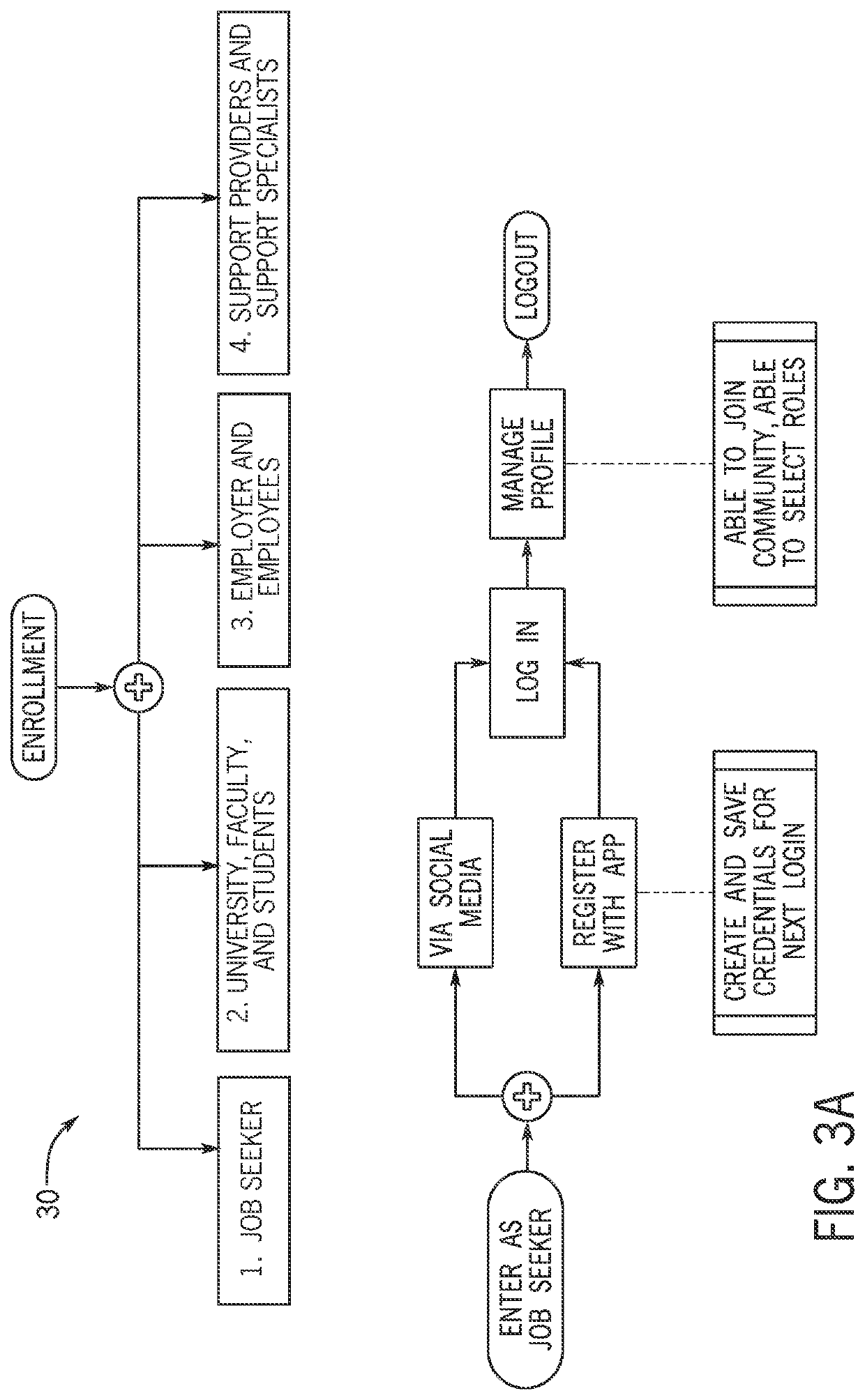Method of increasing workplace disability inclusion and system therefor
a technology of disability inclusion and workplace, applied in the field of employment methods, can solve the problems of increasing the cost of the overall program, not working well in the typical hiring system when it comes to hiring people with disabilities, and current efforts are inadequate to address the employment-related challenges of a growing population with disabilities
- Summary
- Abstract
- Description
- Claims
- Application Information
AI Technical Summary
Benefits of technology
Problems solved by technology
Method used
Image
Examples
Embodiment Construction
[0025]The following detailed description is of the best currently contemplated modes of carrying out exemplary embodiments of the invention. The description is not to be taken in a limiting sense but is made merely for the purpose of illustrating the general principles of the invention, since the scope of the invention is best defined by the appended claims.
[0026]Broadly, one embodiment of the present invention is a method of identifying disability-friendly jobs to create an inclusive environment while building a self-sustaining support system in the workplace for all stakeholders. The method leverages technology and follows structured processes in sequence to increase efficiency and establish a better communication system between all stakeholders.
[0027]As used herein, the phrase “all stakeholders” includes but is not limited to buddies, coaches, mentors, hiring managers, job seekers, co-workers, schools, universities, corporate HR, service providers, support teams, training teams, ...
PUM
 Login to View More
Login to View More Abstract
Description
Claims
Application Information
 Login to View More
Login to View More - R&D
- Intellectual Property
- Life Sciences
- Materials
- Tech Scout
- Unparalleled Data Quality
- Higher Quality Content
- 60% Fewer Hallucinations
Browse by: Latest US Patents, China's latest patents, Technical Efficacy Thesaurus, Application Domain, Technology Topic, Popular Technical Reports.
© 2025 PatSnap. All rights reserved.Legal|Privacy policy|Modern Slavery Act Transparency Statement|Sitemap|About US| Contact US: help@patsnap.com



